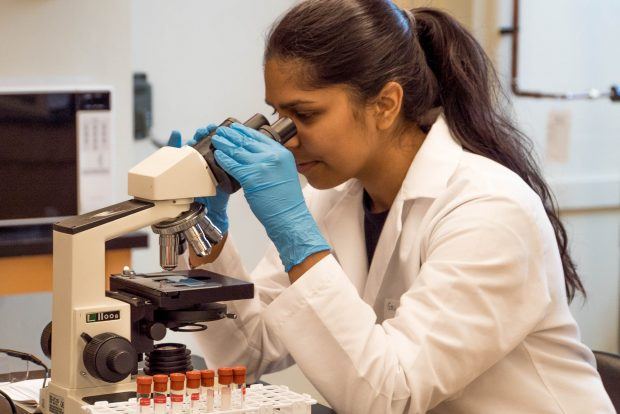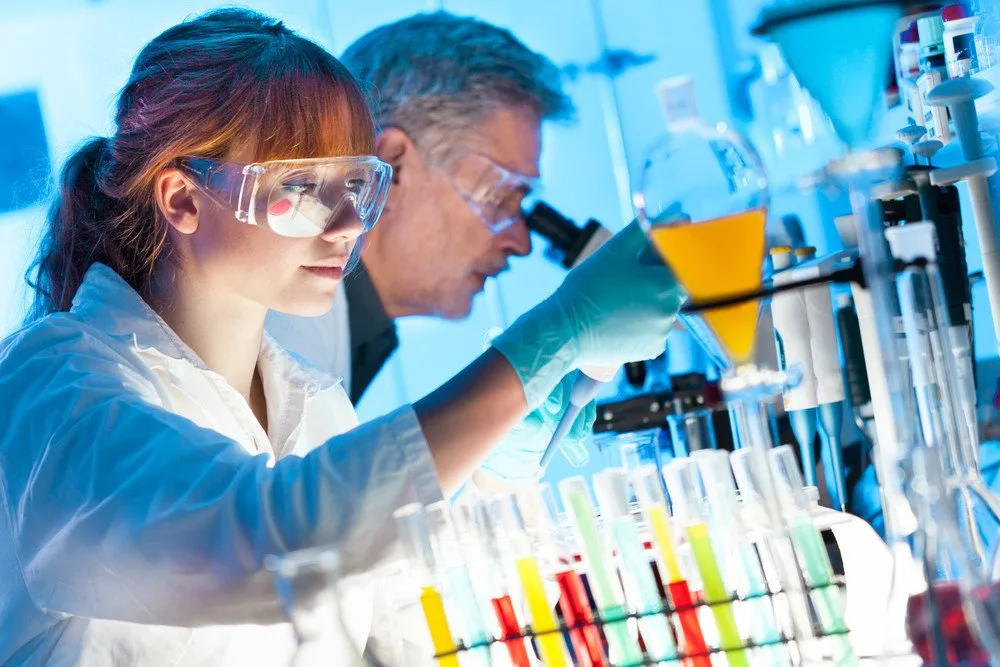Discovery toxicology is a vital aspect of drug development that involves the identification and evaluation of potential adverse effects of new drugs. One prominent example is the case of thalidomide, a drug initially introduced as a sedative in the late 1950s but later found to cause severe birth defects. This led to major changes in regulatory guidelines for drug safety and highlighted the critical importance of early detection and assessment of toxicological risks. Longevity Live Paid Content.
The objective of discovery toxicology is to identify any potential safety risks associated with new drugs before they are tested on humans. Preclinical studies play an essential role in this process, providing valuable insights into the pharmacokinetics, pharmacodynamics, and toxicity profiles of new compounds. Regulatory agencies worldwide require extensive preclinical testing data before approving clinical trials, ensuring that only drugs with acceptable safety margins are tested on human subjects. Understanding discovery toxicology and its methods can help pharmaceutical companies navigate through preclinical studies effectively and bring safe and efficacious therapies to patients.
Objectives of Discovery Toxicology
The current section aims to provide a clear understanding of the objectives that guide discovery toxicology. Toxicity testing is a crucial aspect of drug development, and its primary objective is to assess the safety profile of potential drug candidates. The process involves measuring toxicity endpoints that evaluate the impact of drugs on different organ systems, including the liver, kidneys, heart, lungs, and nervous system. This evaluation helps determine whether a particular drug has any adverse effects on these essential organs.
In addition to measuring toxicity endpoints, another critical objective of discovery toxicology is predicting toxicity. This entails using computational methods or in vitro models to predict how a new compound might behave in vivo before conducting animal studies. Predictive toxicology provides valuable information early in drug development and helps identify potentially harmful compounds before they enter clinical trials or cause harm to humans or animals. Moreover, it enables scientists to optimize lead compounds by making necessary modifications or discarding those with unacceptable safety profiles. Overall, understanding these objectives can help ensure that only safe drugs progress into clinical trials and ultimately reach patients who need them most.
Methods Used in Preclinical Studies
One cannot help but appreciate the thoroughness and scientific rigor with which preclinical studies implement a diverse range of methods to assess the safety, efficacy, and pharmacokinetics of potential drug candidates. These methods include in vitro assays and animal models that are used to evaluate various aspects of drug toxicity, such as genotoxicity, carcinogenicity, reproductive toxicity, and immunotoxicity. In vitro, assays involve testing drug candidates on isolated cells or tissues in a controlled laboratory environment. This method allows researchers to study the effects of drugs on specific cell types or organs without exposing animals to potentially harmful substances.
Animal studies
Animal models are also widely used in preclinical studies because they provide valuable information about how drugs behave in vivo. For example, researchers can use animal models to investigate the pharmacokinetics of drugs by studying their absorption, distribution, metabolism, and excretion (ADME) profiles. Additionally, animal models can be used to evaluate the safety and efficacy of new therapies before they are tested in humans.
By using multiple species of animals during preclinical studies – ranging from rodents to non-human primates – researchers can obtain a better understanding of how drugs affect different biological systems across various taxa. Overall, these methods play an integral role in discovery toxicology by providing valuable data that helps inform decisions regarding whether or not a drug candidate should be advanced into clinical trials.
Regulatory Guidelines for Drug Safety
Compliance with regulatory guidelines for drug safety is crucial in ensuring the protection of human subjects and the successful development of potentially life-saving therapies. Regulatory agencies such as the U.S. Food and Drug Administration (FDA) have established comprehensive guidelines that provide recommendations for conducting preclinical studies, including toxicology testing. These guidelines help ensure that drugs are safe and effective before they are approved for use in humans.
The overview of regulatory guidelines for drug safety includes several key components, such as the selection of relevant animal models, dose-range finding studies, and toxicokinetic evaluations. In addition to these requirements, regulatory agencies also mandate that preclinical studies be conducted according to good laboratory practice (GLP) standards. This means that all aspects of the study, design, conduct, and reporting must meet stringent quality control standards to ensure data integrity and accuracy. Overall, adherence to regulatory guidelines is critical for ensuring patient safety and improving public health outcomes through the development of new drugs.
Integrating Toxicology Data into Drug Development Process
Integrating toxicology data into the drug development process is an essential step in ensuring the safety and efficacy of potential therapeutics, as demonstrated by the case study of thalidomide. Thalidomide was initially marketed as a sedative and anti-nausea medication for pregnant women; however, inadequate toxicity testing led to severe birth defects in children born to mothers who had taken the drug during pregnancy. This tragedy highlights the importance of comprehensive toxicity testing to identify potential adverse effects before a drug is approved for use.
Toxicity testing involves assessing the safety profile of a compound through pharmacological profiling, which includes evaluating its effects on various organs and systems within cells, tissues, and animals. Such tests help to predict how a therapeutic agent may affect humans, including any adverse effects that may arise from exposure. By incorporating toxicity data early in the drug development process, researchers can identify any potential safety concerns and take appropriate actions to mitigate risks or discontinue development if necessary. In conclusion, integrating toxicology data into drug development provides crucial insights that ultimately lead to safer and more effective therapeutics for patients.

Photo by Trust “Tru” Katsande on Unsplash
Frequently Asked Questions
What are the common ethical considerations in conducting discovery toxicology studies?
In conducting discovery toxicology studies, common ethical considerations include obtaining informed consent from human participants and animal welfare. Informed consent is crucial as it ensures that participants are fully aware of the potential risks and benefits associated with their participation in the study.
Additionally, animal welfare is of utmost importance in ensuring that animals are treated ethically and humanely throughout the study process. Researchers must ensure that they adhere to strict guidelines and regulations set forth by governing bodies to minimize any potential harm or suffering experienced by animals during the course of a discovery toxicology study.
How do researchers determine the appropriate animal models for toxicity testing?
The selection of appropriate animal models for toxicity testing is a critical step in ensuring a reliable assessment of potential hazards associated with new chemical entities. As per statistics, approximately 90% of drugs that pass preclinical trials fail to get approval during clinical trials. Hence, it becomes imperative to conduct efficient and accurate toxicity testing using suitable animal models.
Animal model selection largely depends on the toxicity criteria being evaluated, as different species vary significantly in their response to toxic agents. Factors such as dose-response relationships, pharmacokinetics, and metabolism also play a crucial role in determining the most appropriate animal model for a particular toxicity study. Therefore, researchers must carefully consider these factors while choosing an animal model to ensure optimal accuracy and relevance of the study results.
What are the limitations of preclinical studies in predicting toxicity in humans?
Preclinical studies are conducted to assess the safety and efficacy of potential therapeutic agents before clinical trials in humans. However, these studies have limitations when it comes to predicting toxicity in humans. The use of animal models may not accurately represent human physiology, and there may be differences in metabolism, absorption, distribution, and elimination of drugs between animals and humans.
Additionally, preclinical studies often use high doses that do not reflect dosages used in clinical trials which can lead to false-positive results. The use of biomarkers can provide an alternative approach to evaluating drug toxicity without relying solely on animal models. Biomarkers can provide information on the underlying mechanisms of toxicity and potential adverse effects in humans, which cannot be obtained from animal models alone. However, more research must happen to identify reliable biomarkers that can accurately predict drug-induced toxicity in humans.
Alternative models, such as organoids or microphysiological systems, hold promise for predicting drug safety but require further validation before they can replace traditional preclinical studies using animal models.
How do pharmaceutical companies ensure the safety of drugs during clinical trials?
Pharmaceutical companies ensure the clinical safety of drugs by conducting rigorous toxicity testing methods during clinical trials. These methods involve studying the adverse effects of drugs on animals and humans and determining their potential risks to human health. The process begins with animal studies before progressing to human trials in three phases.
During Phase I, researchers tested the drug to determine its safety profile on a small group of healthy volunteers. Phase II involves testing it on a larger group of patients to determine their efficacy and potential side effects. Lastly, in Phase III, the drug is tested on an even larger sample size to confirm its effectiveness and monitor any rare side effects that may arise.
Throughout these phases, pharmaceutical companies must adhere to strict ethical guidelines and regulations set forth by regulatory bodies like the FDA to ensure that drugs are safe for human consumption before they hit the market.
What are the potential long-term effects of exposure to toxic substances in preclinical studies?
Risk assessment and biomarker identification are crucial in evaluating the potential long-term effects of exposure to toxic substances during preclinical studies. These assessments help researchers determine safe levels of exposure to a particular substance and identify any potential adverse effects on physiological systems.
Biomarker identification enables researchers to measure specific indicators in biological samples that can indicate early signs of toxicity, allowing for early intervention before irreversible damage occurs. Furthermore, risk assessment enables pharmaceutical companies to make informed decisions regarding drug development by weighing the benefits against any potential risks posed by a particular substance. Therefore, comprehensive risk assessment and biomarker identification are essential components of preclinical studies aimed at ensuring drug safety and efficacy.
Conclusion
The field of discovery toxicology plays a crucial role in ensuring the safety of new drugs before human testing starts. Through the use of various preclinical methods and adherence to regulatory guidelines, toxicologists can identify potential risks associated with a drug’s use. Researchers then integrated this information into the drug development process. This ensures only safe and effective drugs make it to market.
The importance of discovery toxicology is crucial. It is important to recognize that this field is not without its limitations. The complexity of biological systems means that predicting how a drug will interact with the human body can be challenging, and unexpected adverse effects may still arise despite thorough preclinical testing. However, by continuing to refine our methods and improve our understanding of toxicology, we can work towards developing safer and more effective drugs for all.
Who is the author?

Jessica Ellen
Jessica Ellen is a writer and blogger. She is very passionate about her writing. She always wants to make her readers satisfied through her expressive writing.



![women [longevity live]](https://longevitylive.com/wp-content/uploads/2020/01/photo-of-women-walking-down-the-street-1116984-100x100.jpg)










